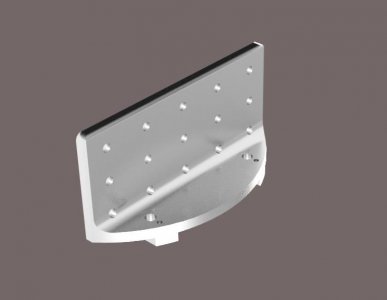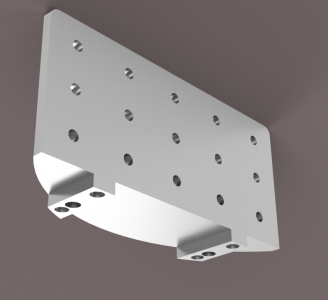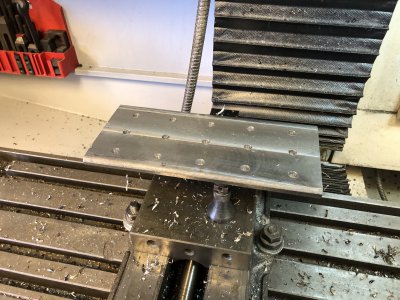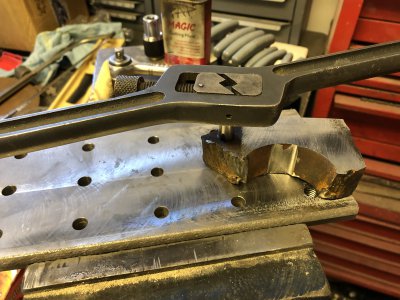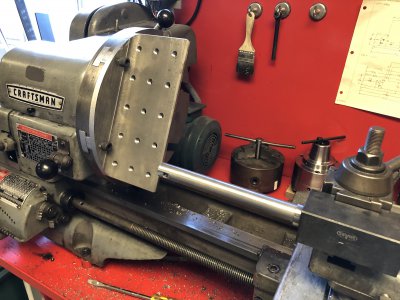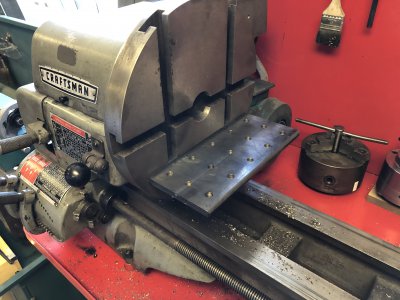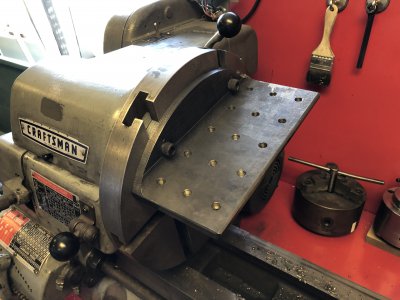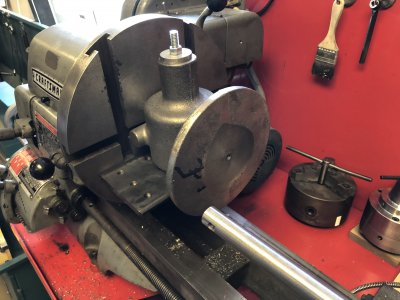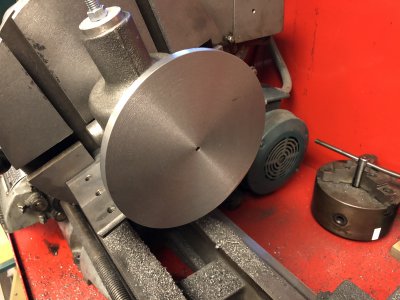- Joined
- May 10, 2012
- Messages
- 997
I wanted a faceplate with more capacity than the 8" one that I have for my Craftsman 12" commercial lathe. I have some castings that I need to bore and would like to do it on the lathe so I can use a fairly robust boring bar, instead of the 1/2" I'm limmited to on the mill. So I turned to my old friend eBay. I found a really robust looking one there with the correct 1 1/2-8 thread. Made an offer and a few days later it showed up at my house. Except that it didn't have the requisite 1 1/2-8 thread, it had something more like 1 11/16-8, the thread measured 1 1/2" on the minor diameter. I decided to go on and keep it, as I liked it and sending it back would be a pain. I decided to purchase a cheap chuck backplate with the correct thread and bore and sleeve the faceplate to the correct thread for the lathe.
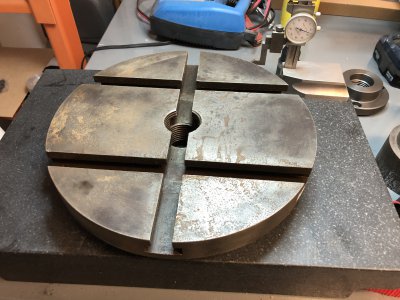
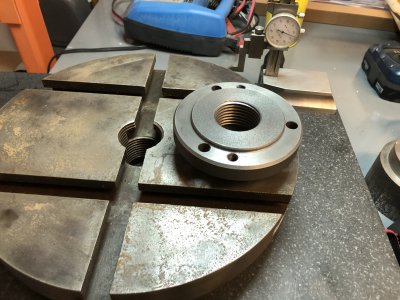
One common problem I've found with these low cost import back plates is that the reference surface (the unthreaded portion where it goes onto the unthreaded portion of the lathe spindle nose) is always oversize. This should be a very close fit on the spindle nose to ensure reapeatable installation. I've fixed this problem before as well, which requires sleeving the backplate. Were getting to sleeving inception here, I think. First thing is to bore a recess for the sleeve, and locktite in the pipe that I use for sleeving my backplates.
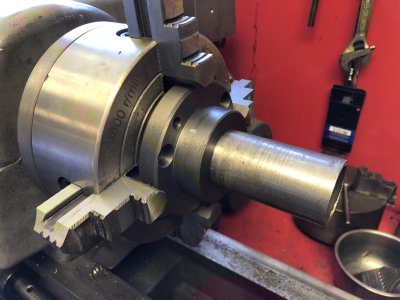
Next I part off the pipe. I had to put it in quite deep as the register area on this backplate was quite deep.
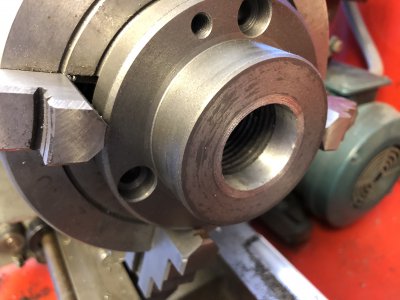
This was then bored to 1.500 (the register nose is 1.499) and then faced off so that the register portion was 3/16 (the register on the lathe is 1/8" long.
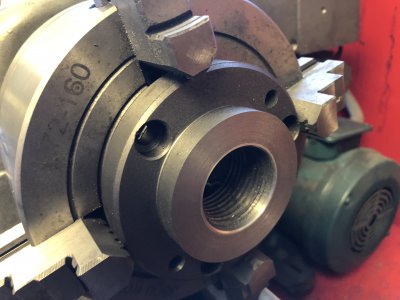
After that there was a whole lot of butchery until I got to what is pictured below. I did all the final cutting with the backplate screwed to the spindle nose.
Dimensions in this picture were 2.250" diameter and 1.167" long. I later decided to cut the diameter down to 2.125 to give a little more meat on the faceplate.
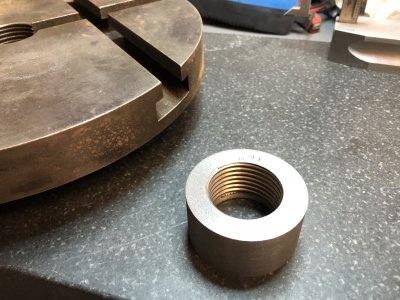
With that out of the way, it was time to tackle the faceplate boring. This was set up in the mill and the existing threads bored out.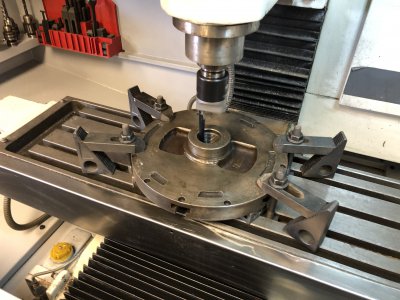
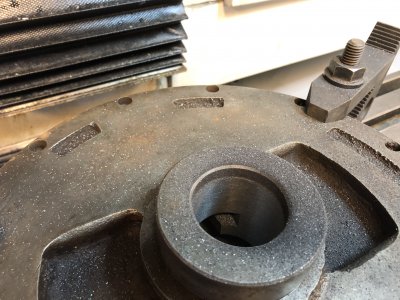
Then I bored the recess for the sleeve 1.135 deep and a close slip fit for the sleeve, which was then locktited in place.
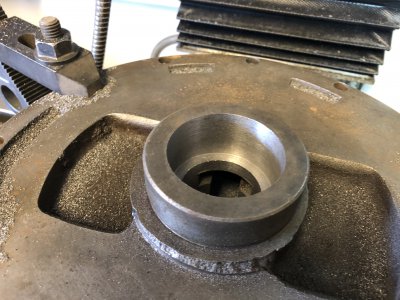
Once in the sleeve was faced with a light cut off the entire face
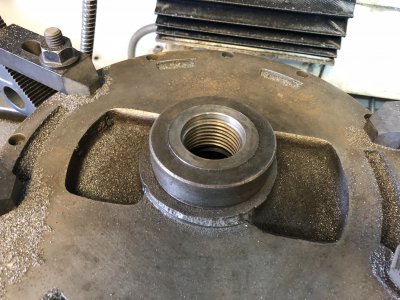
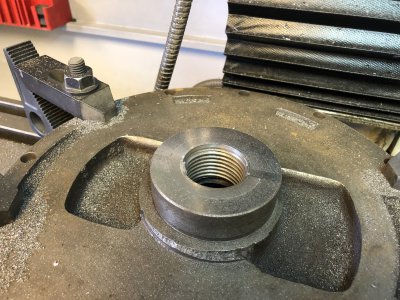
I then drilled 3 holes tapping size for 1/4-28 (the only reason I used these is because I have a lot of them). These were then locktited into the holes and cut off with a hacksaw and another light cut off the entire face, then a bit of deburing with a file and it was ready to mount on the lathe.
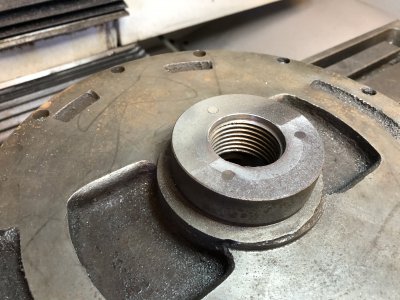
I took a facing cut on the lathe. I was a bit disappointed that the face was out as far as it was, as I had taken great pains to clean and debur the mill table, 123 blocks and the faceplate, but I did wind up having to take about .025 or so off the face before it cleaned up.
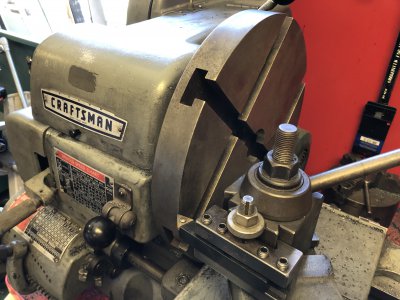
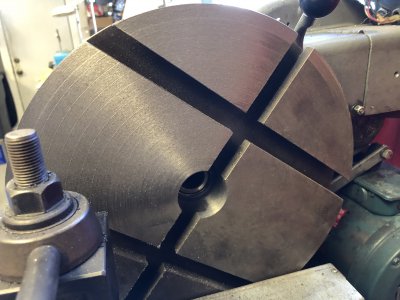
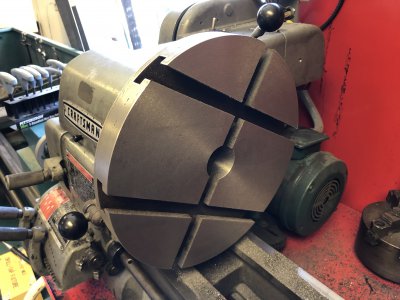
I noticed after completing the facing that there were some cracks. I'll have to be ginger with my clamping around these, but the faceplate should do what I want it to.
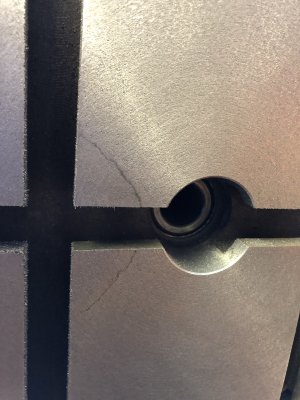


One common problem I've found with these low cost import back plates is that the reference surface (the unthreaded portion where it goes onto the unthreaded portion of the lathe spindle nose) is always oversize. This should be a very close fit on the spindle nose to ensure reapeatable installation. I've fixed this problem before as well, which requires sleeving the backplate. Were getting to sleeving inception here, I think. First thing is to bore a recess for the sleeve, and locktite in the pipe that I use for sleeving my backplates.

Next I part off the pipe. I had to put it in quite deep as the register area on this backplate was quite deep.

This was then bored to 1.500 (the register nose is 1.499) and then faced off so that the register portion was 3/16 (the register on the lathe is 1/8" long.

After that there was a whole lot of butchery until I got to what is pictured below. I did all the final cutting with the backplate screwed to the spindle nose.
Dimensions in this picture were 2.250" diameter and 1.167" long. I later decided to cut the diameter down to 2.125 to give a little more meat on the faceplate.

With that out of the way, it was time to tackle the faceplate boring. This was set up in the mill and the existing threads bored out.


Then I bored the recess for the sleeve 1.135 deep and a close slip fit for the sleeve, which was then locktited in place.

Once in the sleeve was faced with a light cut off the entire face


I then drilled 3 holes tapping size for 1/4-28 (the only reason I used these is because I have a lot of them). These were then locktited into the holes and cut off with a hacksaw and another light cut off the entire face, then a bit of deburing with a file and it was ready to mount on the lathe.

I took a facing cut on the lathe. I was a bit disappointed that the face was out as far as it was, as I had taken great pains to clean and debur the mill table, 123 blocks and the faceplate, but I did wind up having to take about .025 or so off the face before it cleaned up.



I noticed after completing the facing that there were some cracks. I'll have to be ginger with my clamping around these, but the faceplate should do what I want it to.

Last edited:

